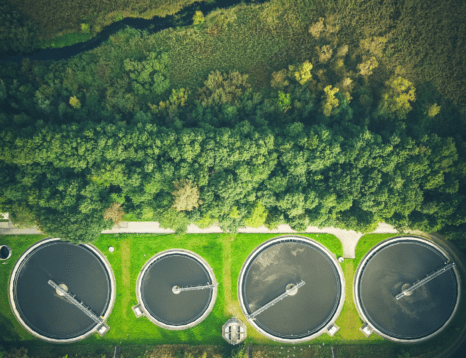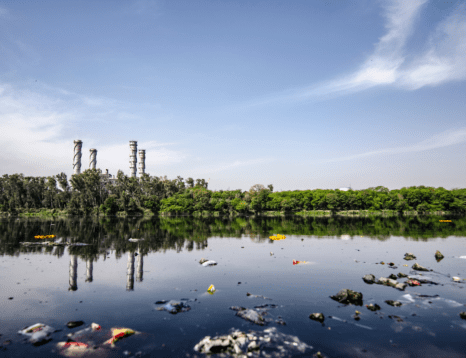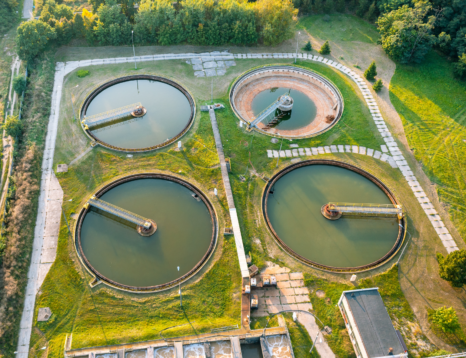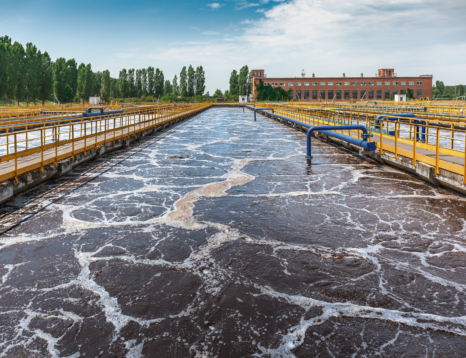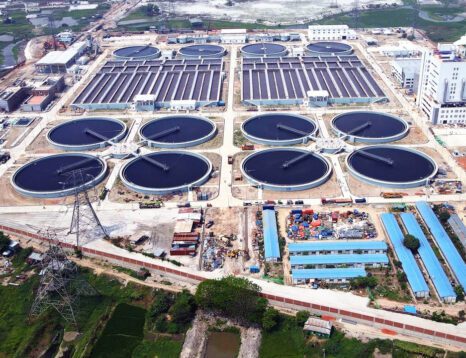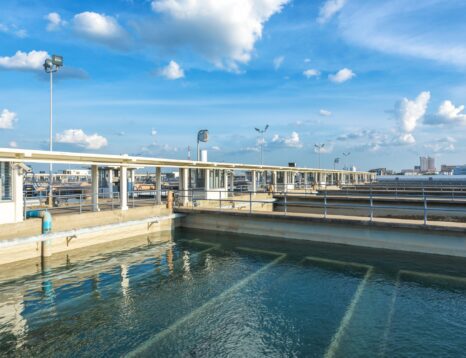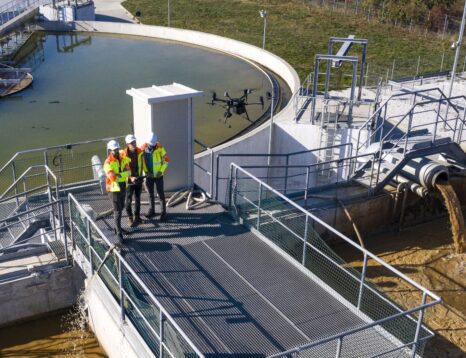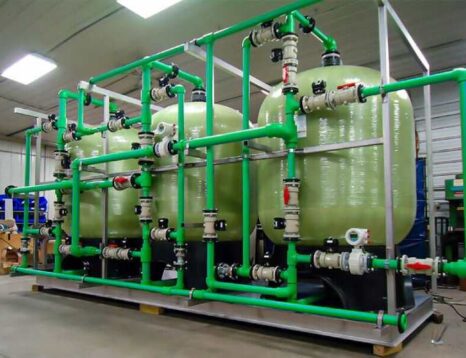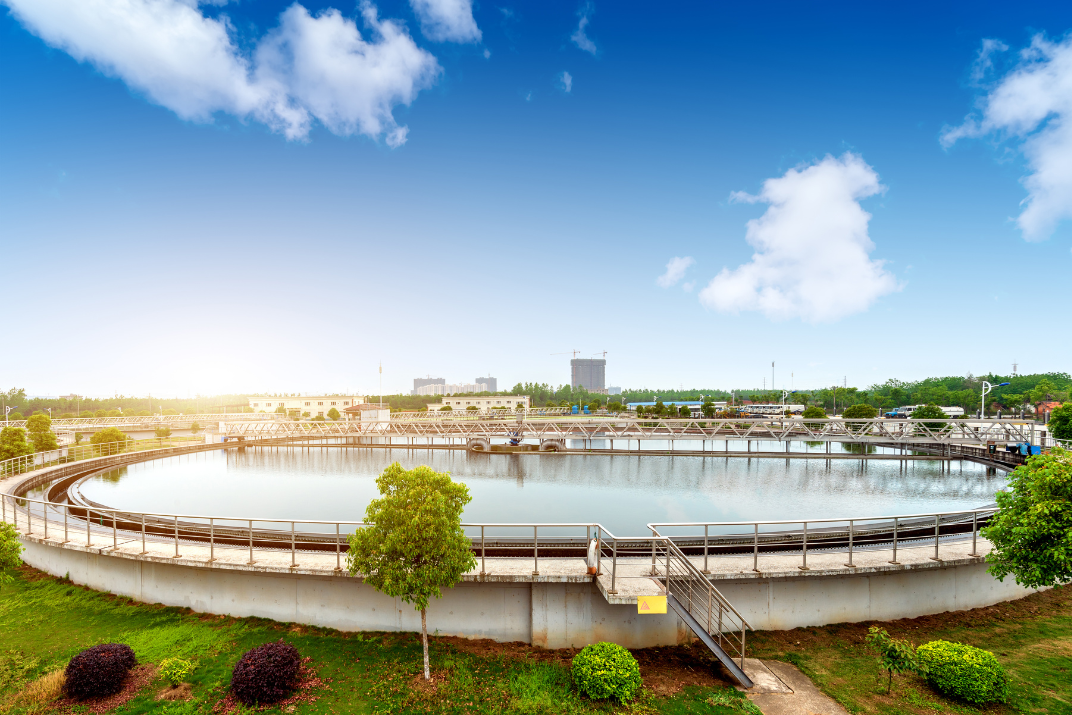
Importance of ETP Plant in Bangladesh
Effluent Treatment Plants (ETPs) are crucial for managing industrial wastewater and ensuring environmental sustainability. In Bangladesh, the establishment and operation of ETPs have become increasingly important due to rapid industrialization and environmental concerns. The importance of Effluent Treatment Plants (ETPs) in Bangladesh cannot be overstated due to several critical reasons:
- Environmental Protection: Bangladesh faces serious environmental challenges due to industrial pollution, especially in its water bodies. ETPs play a crucial role in treating industrial wastewater before it is discharged into rivers, lakes, or other water sources. By removing pollutants and contaminants from the wastewater, ETPs prevent water pollution and protect the environment.
- Compliance with Regulations: The government of Bangladesh has enacted environmental regulations to control industrial pollution and protect public health. ETPs are essential for industries to comply with these regulations. Failure to treat wastewater properly can result in fines, penalties, or even closure of non-compliant facilities. Thus, ETPs are vital for ensuring that industries operate within the legal framework and maintain environmental standards.
- Public Health Protection: Untreated industrial wastewater contains various harmful substances, including heavy metals, organic compounds, and pathogens, which can pose serious health risks to people living nearby or using contaminated water sources. ETPs help mitigate these risks by removing or reducing the concentration of pollutants in wastewater, thereby safeguarding public health.
- Sustainable Development: Bangladesh is striving for sustainable development, balancing economic growth with environmental conservation. ETPs support this goal by enabling industries to operate in an environmentally responsible manner. By investing in ETPs, industries contribute to sustainable development efforts by minimizing their environmental footprint and preserving natural resources for future generations.
- Reputation and Market Access: In today's globalized world, consumers and international markets are increasingly concerned about environmental sustainability and social responsibility. Industries with effective ETPs demonstrate their commitment to environmental protection and responsible business practices, enhancing their reputation and competitiveness in domestic and international markets. Access to markets with stringent environmental standards may also require proof of wastewater treatment compliance through ETPs.
- Resource Conservation: ETPs often incorporate technologies for recycling and reusing water and recovering valuable resources from wastewater, such as energy or raw materials. These practices help conserve water resources, reduce the demand for freshwater, and minimize the discharge of pollutants into the environment, contributing to resource efficiency and sustainability.
In general, ETPs play a vital role in safeguarding the environment, public health, and sustainable development in Bangladesh, making them indispensable for the country's industrial sector and its aspirations for a cleaner, healthier future.
Some Key Points Regarding
ETPs in Bangladesh
- Industrial Growth: Bangladesh has experienced significant industrial growth in recent years, particularly in sectors like textiles, leather, pharmaceuticals, and food processing. While this growth has contributed to the country's economic development, it has also resulted in increased industrial wastewater generation.
- Environmental Challenges: The discharge of untreated or inadequately treated industrial effluents poses significant environmental challenges, including water pollution, soil contamination, and adverse impacts on public health and aquatic ecosystems.
- Regulatory Framework: The government of Bangladesh has implemented various laws and regulations to address environmental issues, including the discharge of industrial effluents. The Department of Environment (DOE) is responsible for enforcing these regulations, including the requirement for industries to establish ETPs and obtain environmental clearance.
- ETP Installation Mandate: Industries in Bangladesh are mandated to install and operate ETPs to treat their wastewater before discharge. This requirement applies to both existing industries and new projects seeking environmental clearance.
- Challenges and Compliance Issues: Despite regulatory mandates, compliance with ETP installation and operation requirements has been a challenge for many industries in Bangladesh. Factors such as lack of awareness, financial constraints, technical capacity issues, and inadequate enforcement have contributed to non-compliance.
- Government Initiatives and Support: The government, in collaboration with international organizations and development partners, has undertaken initiatives to promote ETP installation and compliance among industries. These initiatives include providing financial incentives, technical assistance, capacity building, and conducting awareness campaigns.
- Role of NGOs and Civil Society: Non-governmental organizations (NGOs) and civil society groups play a significant role in advocating for environmental protection and monitoring industrial pollution in Bangladesh. They often collaborate with government agencies, industry stakeholders, and communities to promote sustainable practices and ensure compliance with environmental regulations.
While significant progress has been made in the establishment and operation of ETPs in Bangladesh, there are still challenges to overcome to ensure effective wastewater management and environmental protection in the country's industrial sectors. Continued efforts from the government, industries, civil society, and other stakeholders are essential to address these challenges and achieve sustainable industrial development.
Effluent Treatment Plants (ETPs) Design in Bangladesh
Designing Effluent Treatment Plants (ETPs) in Bangladesh requires consideration of various factors, including regulatory requirements, available technology, the characteristics of the effluent, and environmental concerns. Here's a general outline of the steps involved in designing an ETP in Bangladesh:
- Regulatory Compliance: Familiarize yourself with the environmental regulations and guidelines set by the Department of Environment (DOE) of Bangladesh. These regulations specify permissible limits for various pollutants in effluents discharged from industries.
- Characterization of Effluent: Conduct a detailed analysis of the effluent to determine its composition and characteristics. This analysis will help in selecting appropriate treatment technologies and designing the treatment processes.
- Treatment Technologies: Based on the effluent characterization, select suitable treatment technologies. Commonly used treatment processes in ETPs include:
- Physical Treatment: Processes like sedimentation, filtration, and flotation are used for the removal of suspended solids and particulate matter.
- Chemical Treatment: Coagulation, flocculation, oxidation, and precipitation processes are employed for the removal of dissolved pollutants and color.
- Biological Treatment: Aerobic and anaerobic processes such as activated sludge process, extended aeration, sequencing batch reactors (SBR), and anaerobic digestion are used for the degradation of organic pollutants.
- Advanced Treatment: Techniques like membrane filtration (e.g., ultrafiltration, reverse osmosis), ion exchange, and advanced oxidation processes (AOPs) are employed for the removal of specific pollutants and achieving stringent discharge standards.
- Process Design: To design the ETP process. factors such as flow rate, retention time, treatment efficiency, space availability, and operational feasibility are being considered. It must be ensured that the design complies with the regulatory standards and environmental requirements.
- Equipment Selection: Select appropriate equipment, such as pumps, mixers, clarifiers, aeration systems, filters, and chemical dosing systems, based on the chosen treatment processes and design parameters.
- Construction and Installation: Construct the ETP infrastructure following the design specifications and guidelines. Ensure proper installation and integration of equipment and systems.
- Operation and Maintenance: Develop an operation and maintenance plan for the ETP. Train personnel responsible for operating the plant and carrying out routine maintenance activities. Regularly monitor effluent quality and system performance to ensure compliance with regulatory standards.
- Monitoring and Compliance: Implement a monitoring program to regularly assess effluent quality and ensure compliance with regulatory limits. Maintain records of monitoring data and reports for submission to regulatory authorities as required.
- Continual Improvement: Continuously evaluate the performance of the ETP and identify opportunities for improvement in terms of efficiency, cost-effectiveness, and environmental impact. Implement necessary modifications and upgrades to enhance the overall performance of the plant.
It's crucial to engage experienced professionals, including environmental engineers, process engineers, and consultants, for the design, construction, and operation of ETPs in Bangladesh to ensure effective treatment of industrial effluents while minimizing environmental pollution and complying with regulatory requirements. Additionally, collaboration with regulatory authorities and stakeholders can facilitate smoother implementation and operation of ETPs.
ETP Plant to Treat Industrial Wastewater
An Effluent Treatment Plant (ETP) is crucial for treating industrial wastewater to make it safe for discharge or reuse. Here's a basic overview of what an ETP for industrial wastewater treatment typically involves:
- Pretreatment: This involves physical processes such as screening, grit removal, flow segregation and pH correction to remove large solids, oil, grease, and other floating materials from the wastewater.
- Primary Treatment: This phase utilizes a combination of physical and chemical processes to remove impurities. These processes include chemical/electrochemical coagulation and flocculation, lamella settling, dissolved air floatation (oil & grease removal), primary sedimentation and involves physical and chemical treatments to adjust the pH from alkaline conditions to a pH near neutral level.
- Secondary Treatment: This stage involves biological processes where microorganisms break down organic pollutants present in the wastewater. The activated sludge process (ASP), sequencing batch reactors (SBR), membrane bioreactor (MBR), moving bed bio reactor (MBBR), upflow anaerobic sludge blanket (UASB) are examples of common techniques.
- Tertiary Treatment: Sometimes, further treatment is required to remove remaining contaminants to meet specific discharge standards or to enable water reuse. Tertiary treatment may involve advanced processes like filtration (such as sand filtration and multimedia filtration), chemical treatment (such as chemical/ozone disinfection), or advanced filtration processes.
- Sludge Treatment: Throughout the treatment process, sludge is generated, which needs to be managed properly. This can involve dewatering processes (like centrifugation and belt presses) to reduce the volume of sludge and further treatment (such as anaerobic digestion or composting) to stabilize it for disposal or beneficial reuse.
- Monitoring and Control: Continuous monitoring and control systems are essential to ensure that the treatment processes are operating efficiently and effectively. Parameters such as pH, temperature, dissolved oxygen, and pollutant concentrations need to be monitored regularly.
- Compliance and Regulations: Compliance with local environmental regulations and discharge standards is crucial. The design and operation of the ETP should ensure that the treated wastewater meets the required quality standards before discharge into water bodies or reuse.
- Safety Measures: Safety measures should be implemented to protect workers and the environment from potential hazards associated with handling and treating industrial wastewater, including chemical spills, exposure to toxic substances, and equipment malfunction.
- Maintenance and Training: Regular maintenance of equipment and infrastructure is essential to ensure the continued effectiveness of the ETP. Additionally, providing training to operators on proper operation and maintenance procedures is crucial for the long-term success of the treatment plant.
When designing an ETP for industrial wastewater treatment, factors such as the type and volume of pollutants present in the wastewater, the required treatment level, available space, budget constraints, and local regulations need to be considered. Consulting with environmental engineers or firms specializing in wastewater treatment is often necessary to develop an effective and compliant treatment solution.
ETP installation & operation requirements:
Challenges faced by industries in Bangladesh
Complying with ETP (Effluent Treatment Plant) installation and operation requirements in Bangladesh presents several challenges for industries:
- Cost Burden: The installation and operation of ETPs involve significant initial investments and ongoing operational costs. Many industries, especially small and medium-sized enterprises (SMEs), struggle to bear these expenses.
- Technical Expertise: Designing, installing, and maintaining ETPs requires specialized technical knowledge and skills. Some industries may lack in-house expertise or find it challenging to hire qualified personnel.
- Space Constraints: Industries operating in urban or densely populated areas often face space constraints when installing ETPs. Finding suitable land for setting up ETP infrastructure can be difficult and expensive.
- Power Supply: ETPs require a continuous and reliable power supply to operate effectively. However, power outages and fluctuations are common in Bangladesh, which can disrupt ETP operation and treatment processes.
- Chemical Availability: The availability of chemicals and consumables needed for ETP operation can be inconsistent, leading to delays or interruptions in treatment processes.
- Regulatory Compliance: Keeping up with evolving environmental regulations and compliance standards can be challenging for industries. Changes in regulations may require upgrades or modifications to existing ETPs, adding to the compliance burden.
- Monitoring and Reporting: Industries are required to regularly monitor effluent quality and submit reports to regulatory authorities. Setting up monitoring systems and ensuring accurate reporting can be resource-intensive and time-consuming.
- Enforcement and Oversight: Inconsistent enforcement of environmental regulations and inadequate oversight by regulatory agencies can undermine compliance efforts. Lack of enforcement may lead some industries to prioritize cost-cutting over environmental protection.
Addressing these challenges requires collaboration between industries, government agencies, and other stakeholders to provide technical support, streamline regulatory processes, and improve access to financing for ETP implementation and operation.
Collaboration between Industries, ETP operators, and the Department of Environment Bangladesh
An Effluent Treatment Plant (ETP) is a facility designed to treat industrial wastewater to remove pollutants and contaminants before it is discharged into the environment. ETPs are necessary for industries to reduce their influence on nearby ecosystems and public health, as well as to comply with environmental rules.
In Bangladesh, the Department of Environment (DOE) is the regulatory body responsible for ensuring environmental conservation and sustainable development. The DOE plays a crucial role in enforcing environmental laws and regulations, issuing permits for industrial operations, monitoring pollution levels, and promoting environmental awareness and compliance.
For industries in Bangladesh, especially those that produce significant amounts of wastewater containing pollutants, having an ETP is often a legal requirement enforced by the Department of Environment. Industries must obtain permits from the DOE for the construction and operation of ETPs, and they are subject to regular inspections and monitoring to ensure compliance with environmental standards.
The DOE sets effluent discharge standards based on the type of industry and the pollutants involved. These standards dictate the permissible levels of various contaminants in wastewater discharged from industrial facilities. ETPs are designed and operated to meet these standards, typically employing a combination of physical, chemical, and biological processes to treat wastewater effectively.
So, it is clear that collaboration is vital among industries, ETP operators, and regulatory bodies like the Department of Environment to protect the environment and public health in Bangladesh by ensuring proper treatment of industrial wastewater and compliance with regulations.
Technology for a
Sustainable Future
Kingsley™ focuses on long term & sustainable future with a reliable technology.
